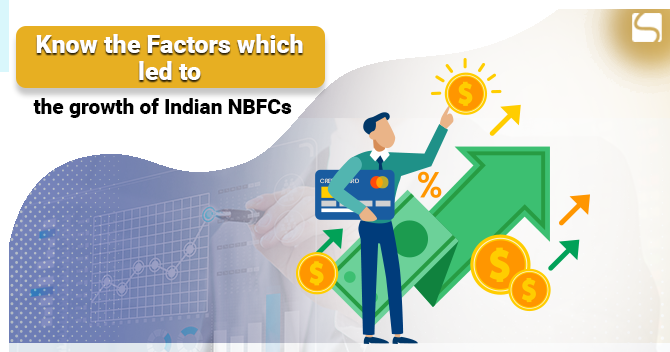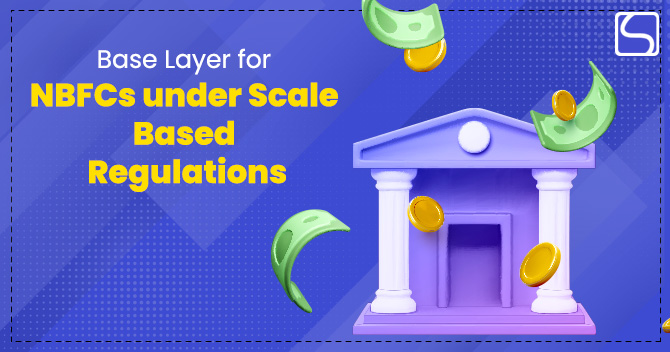Complete Guide on Embedded Finance for Fintechs in India

Karan Singh | Updated: Sep 24, 2022 | Category: NBFC
In recent years, the embedded insurance concept has gained so much popularity in the insurance market of India. The publisher expects embedded insurance to be a game-changer for the Indian industry over the forecast period. In 2022, India’s Embedded Finance industry is expected to grow by 46% on an annual basis to reach 4,801 million US Dollars. The Embedded Finance industry is expected to grow steadily over the forecast period, recording a CAGR of 30.4% during 2022-2029. The embedded finance revenues in the nation will increase from US$ 4,801 million in 2022 to reach US$ 21,127 million by 2029. In this write-up, we will discuss Embedded Finance for Fintechs in India.
Table of Contents
What is Embedded Finance?
It is the seamless integration of financial services into a traditionally non-financial service. Embedded Finance Infrastructure enables customer-facing digital platforms to embed financial services[1] into themselves. It is primarily designed to streamline financial processes for users & offer a better user experience, wherein they can easily access what they need & when they need it.
Following are examples of embedded finance:
- Embedded Cards: These cards can be seen as a substitute for credit cards & debit cards for regular spending between a user & their vendor(s). It allows a user or consumers to transfer funds to cards electronically & make purchases limited to the transferred fund’s value, which may also be activated. Embedded cards are more cost-effective and secure than traditional cards. Some examples of Embedded Cards include expense cards, corporate cards, smart cards, etc.
- Embedded Banking: This is the process of integrating financial solutions with a business’ platform/app through the use of APIs. It works as an umbrella term, encompassing various types of financial services, including contactless payments, bank transfers, payments, lending, and card issuing. Embedded Banking allows companies to benefit from having integrated financial solutions on their platform/app without having to hire a whole team to implement it.
- Embedded Payments: With such payments, consumers make payments with the touch of a button. It permits them to make payments without switching between apps, which speeds up the checkout & payment settlement processes, hence providing an excellent user experience. Many food-delivery apps offer embedded payments.
- Embedded Lending: Nowadays, consumers don’t need to visit banks for a loan. Most non-financial firms have ventured into the financial segment to enable users or customers to get credit right at the point of purchase. It eliminated the need for 3rd parties, lengthy processes & extreme paperwork.
- Embedded Insurance: Today, people are becoming increasingly tech-savvy, so technical integration has become a crucial need for selling insurance policies. Embedded Insurances is a far better option than the complicated traditional process of buying such plans. It allows insurance companies to approach customers via a secure platform that they are more likely to trust.
- Embedded Investments: Many investors may not be aware of secure financial investments. However, it is a vital aspect of the effective management of money. Therefore, it is sensible to make embedded investments as it simplifies the investment process by providing a single platform for investing & managing money. It allows users or customers to put money in different financial instruments without leaving the platform, which is a safety measure.
Benefits of Embedded Finance
Following are the benefits of Embedded Finance:
- For Consumers:
- In context, financial service offerings improve users’ experience on the platform.
- Consumers get access to an array of easy, cheaper & flexible financial services. They are approved for more financial services & on user-friendly terms.
- Users can get tailored financial solutions that perfectly fit their requirements.
- Digital Platforms:
- It increases their (digital platforms) average order value, customer retention & customer lifetime value, thus resulting in increased revenue.
- It aids the platform capture valuable customer data that can be beneficial in deciphering their purchasing behaviour, which can be provided in various ways.
- A digital platform can easily beat the competition by adding financial services to its product offering.
- Financial Institutions:
- Financial Institutions can leverage the distribution capabilities of digital platforms to access a large pool of borrower information, which can be used to offer tailor-made financial solutions to potential borrowers.
- It results in imported underwriting & well-organised credit lifecycle management, thus boosting their margins.
Impact of Embedded Finance
Banks will Partner with Tech Player: Partnering with digital platforms allows financial institutions to leverage their vast amounts of customer data.
- Banks can use such data to acquire new customers, understand existing ones better, tailor financial products accordingly & drive repeat transactions.
- Improved Unit Economics of Financial Services: Financial Institutions can get more customers at a lower cost and more efficiently while also driving repeat transactions. This improved their margins, which means they can provide the same financial products to the customers at an optimised cost.
- BNPL: BPNL stands for Buy Now Pay Later, will become more popular and revenue from this service will account for over 50% of the Embedded Finance market by 2026. This growth is reflective, in part, of increasingly high customer expectations around unified payments & convenience. As a result, one-stop-shop apps where customers can make purchases, seek credit and pay for utilities will soon become the norm as opposed to the exception.
- Digital Platforms will play an essential role in the distribution of financial services: Such platforms are in an exclusive position to serve their customers better than ever before and in ways that traditional financial institutions cannot. Now, customers expect digital platforms to fulfil their requirements more deeply. With their deep knowledge of users, they can foster innovation & play an essential role in the distribution in the distribution of financial services to customers.
- Vertical SaaS will Continue to Grow: Embedded Finance infrastructure has made it possible for SaaS companies to add financial services to their core software product. Customers in vertical markets leverage purpose-built software that solves the highest majority of their problems. As an outcome, the customer works with that company for every software need. The SaaS market generally has 1 dominant player that fulfils the widest range of customer needs.
- Better Experience of Consuming Financial Services for the Customer: With the excess of Embedded Finance companies coming up and our most-loved brands now offering financial services, customers are now spoilt for choice. Existing services are only getting better & accessibility is only set to improve.
How Does Embedded Finance Work?
The ecosystem of financial services is underpinned by 3 core services, of which any firm must be able to provide at last one to be considered a financial services firm which comprises transactions or payments, risk management and financing or investments. In essence, the entity must be able to control & manipulate the flow of capital whilst integrating it seamlessly into transactions between the core businesses operated by the company under the limitation of the prevailing jurisdictional regulatory limitations.
For example, Uber has payments embedded into the user experience of getting a rise and for the driver, into their experience of getting paid the right amount at the right time. Now with debit cards & checking accounts embedded for the drivers, Uber drivers are getting an easy & integrated experience. They no need to look outside of Uber to open accounts. Many unbanked drivers are getting into the financial mainstream.
Conclusion
Embedded Finance is one of the rapid growing sub-sectors in the Fintech industry. The potential for its growth is extensive in a country like India with a huge young population on the internet. With time, we can expect more & more innovation & unique offerings in this domain for different types of businesses or users. However, it is vital as a user to have the basic knowledge of financial actions one may partake in online & the implicit consequences of the same.
Read our Article:Advantages of digitalisation in loan products for new NBFCs














